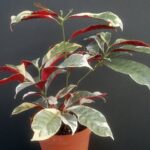Palm trees are iconic symbols of tropical landscapes, known for their graceful fronds and towering heights. However, beneath the surface lies a complex and often misunderstood root system that plays a crucial role in the tree’s health and survival. In this article, we delve into the fascinating world of palm tree roots, exploring their anatomy, growth habits, and cultivation considerations.
I. Introduction
Intriguing Nature of Palm Trees and Their Root Systems Palm trees evoke images of sandy beaches and lush tropical paradises, but their below-ground structures are equally intriguing. While palm tree roots may not receive as much attention as their towering canopies, they are essential for the tree’s stability, nutrient uptake, and overall well-being. Understanding the characteristics and functions of palm tree roots is essential for successful cultivation and maintenance.
Importance of Understanding Palm Tree Roots for Cultivation and Maintenance Whether you’re a homeowner with a backyard oasis or a landscaper designing a public garden, knowing what lies beneath the surface is crucial when working with palm trees. From proper planting techniques to irrigation and maintenance practices, a comprehensive understanding of palm tree roots can ensure the health and longevity of these iconic trees.
II. Anatomy of Palm Tree Roots
Structure and Characteristics Palm tree roots exhibit a unique structure characterized by a fibrous root system and adventitious roots. Unlike trees with taproots, palm trees develop a network of thin, fibrous roots that radiate outward from the base of the tree. These fibrous roots are adept at absorbing moisture and nutrients from the soil, contributing to the tree’s overall health and vigor. Additionally, palm trees may produce adventitious roots from the base of the trunk or lower stem, providing additional support and stability.
Functions and Adaptations The primary functions of palm tree roots include nutrient and water uptake, as well as anchorage and stability. The fibrous nature of the root system allows for efficient absorption of water and essential minerals from the soil, even in nutrient-poor or sandy substrates. Additionally, palm tree roots are adapted to withstand strong winds and turbulent weather conditions, providing stability and support to the tree’s above-ground structure.
III. Growth Habits and Spread
Vertical and Horizontal Expansion Palm tree roots exhibit both vertical and horizontal growth patterns, with some species developing deep taproots while others spread horizontally near the surface. The depth and spread of palm tree roots can vary depending on factors such as soil type, moisture levels, and environmental conditions. In urban settings, palm tree roots may encounter obstacles such as pavement or underground utilities, influencing their growth habits and spread.
Interactions with Surrounding Vegetation and Structures Palm tree roots interact with surrounding vegetation and structures in various ways. In densely planted landscapes, competition for water and nutrients may occur, leading to root competition and limited growth potential. Additionally, palm tree roots can exert pressure on hardscape features such as sidewalks and driveways, causing damage over time. Proper planning and maintenance practices are essential to mitigate these issues and promote healthy root development.
IV. Cultivation and Maintenance Considerations
Planting Depth and Spacing When planting palm trees, it’s crucial to consider the depth and spacing of the root ball to ensure proper establishment and growth. Planting too deep can restrict root oxygenation and lead to root suffocation, while inadequate spacing can result in overcrowding and competition for resources. Following recommended planting guidelines and spacing requirements can promote healthy root development and overall tree health.
Irrigation and Drainage Requirements Palm trees have specific irrigation and drainage requirements to thrive in their natural habitat. While they prefer consistently moist soil, they are susceptible to root rot and other diseases in waterlogged conditions. Proper irrigation practices, such as deep, infrequent watering, can help maintain soil moisture levels while preventing waterlogging and root suffocation.
Protection from Damage and Disturbances Palm tree roots are sensitive to damage and disturbances, particularly during construction and landscaping activities. Heavy machinery, soil compaction, and trenching can all impact root health and vitality. Implementing protective measures such as root barriers and mulching can help safeguard palm tree roots from damage and promote healthy growth in urban environments.
V. ConclusionRecap of Key Insights into Palm Tree Roots Palm tree roots are essential for the health and stability of these iconic trees, playing a crucial role in nutrient uptake, water absorption, and structural support. Understanding the anatomy, growth habits, and cultivation considerations of palm tree roots is essential for successful palm tree cultivation and maintenance.
Importance of Proper Care and Maintenance By implementing proper planting techniques, irrigation practices, and protection measures, homeowners and landscapers can ensure the long-term health and vitality of palm trees in their care. Healthy roots contribute to healthy trees, promoting lush foliage, robust growth, and overall landscape beauty.
Encouragement for Further Exploration and Appreciation As we’ve explored in this article, palm tree roots are fascinating structures with unique adaptations and functions. By delving deeper into the world beneath the surface, we can gain a greater appreciation for the intricate balance of life and growth that sustains these iconic trees in the natural world.



